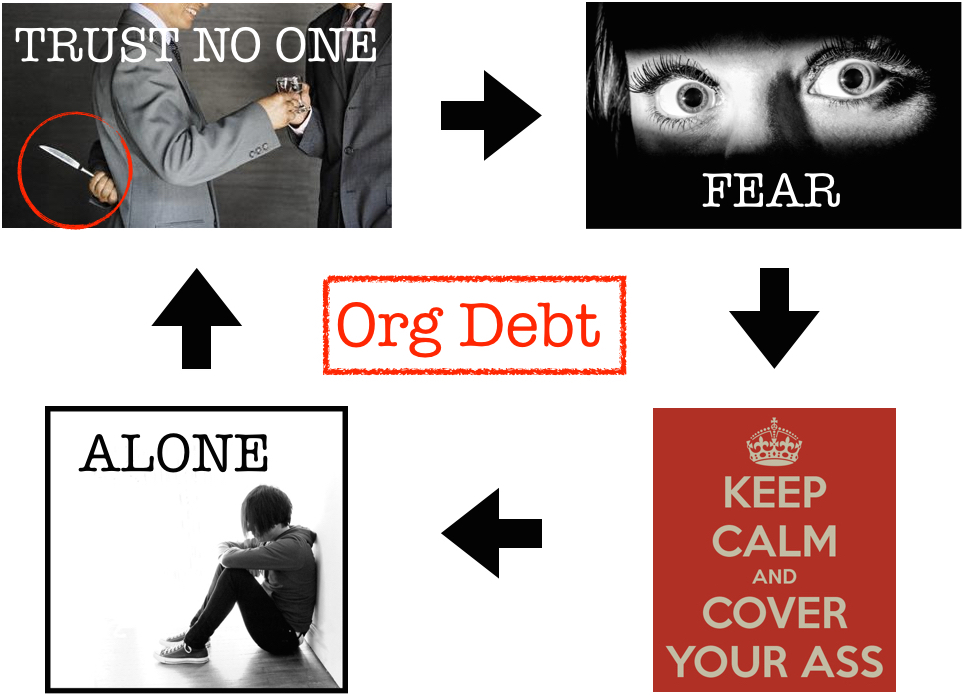Many consider the modern workplace inhumane and uninhabitable. People are not fully engaged. It is killing our bottom lines. It is putting our organizations at risk. With our prevailing management system we have created a vast organizational debt that inhibits growth and performance.
We define organizational debt as the baggage that prevents people from delivering astonishing results. The diagram below shows the key problems that impact each human being and ultimately the effectiveness of our whole organization.
Joint post with Olaf Lewitz.
Organizational Debt Cycle
This is how the organizational debt cycle works:
We learn not to trust people we don’t know well, so our first principle is not to trust anyone. We act as if we’re afraid and sometimes we are. We want to be safe, avoid to be noticed, avoid to stand out. The more we cover our *ss, the less we connect. The less we connect, the more we feel alone… and can’t build any trust. The cycle continues.
The cycle works the other way, too: We start being afraid, not trusting people, feeling alone, so we make sure we don’t get hurt…
Impact
There is a direct connection between each of these problems and our organization’s effectiveness. For example:
- No trust → I will try to do this myself rather than cooperate with you. I don’t believe in my leaders.
- Fear → I will not ask for help when I need it. I will not take any risks that might improve things.
- Cover your *ss → I will not report important information. I will not speak up to avoid disaster.
- Alone → I will disengage. I will be powerless and not valued.
Henry Ford reportedly said that “every pair of hands comes with its own brain”. Many people got used to leave their brain at the door when they came to work. In many organisations people additionally leave their hearts outside. We don’t fully show up at work.
Prominent words like “work-life-balance” only make sense if we leave our life outside when we go to work. This cycle describes how we do that and why we keep doing it. We don’t feel we have a choice.
How We Create Organizational Debt
In organizations we create structures to support it:
- RACI matrices have single responsibilities → alone
- Performance reviews → fear
- Reports are expected to match plans → cover your *ss
- Don’t rock the boat → cover your ass
- Gap between what we say and do → Trust no one
As leaders, we may unwittingly create or support an organizational culture where mistrust and fear impair performance.
How to Use this Model
The purpose of this model is to create awareness. When we choose to acknowledge and accept what is actually going on, then new behaviours and choices automatically emerge. Once we decide that we no longer wish to operate in this cycle, we may then ask, “What do we wish for ourselves?”



